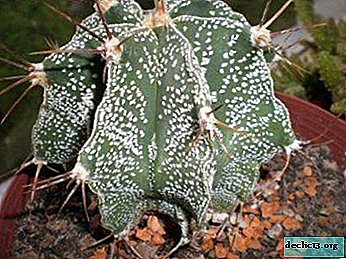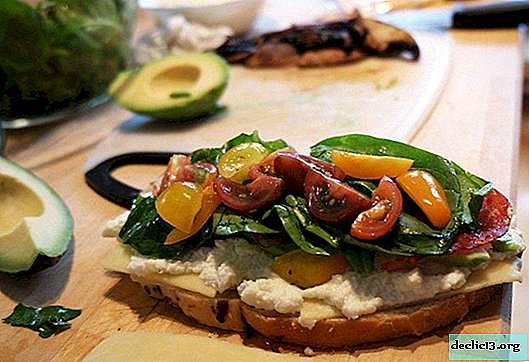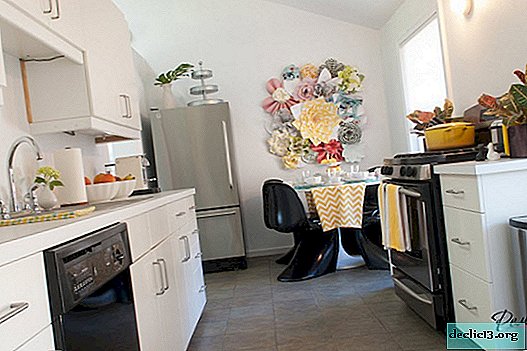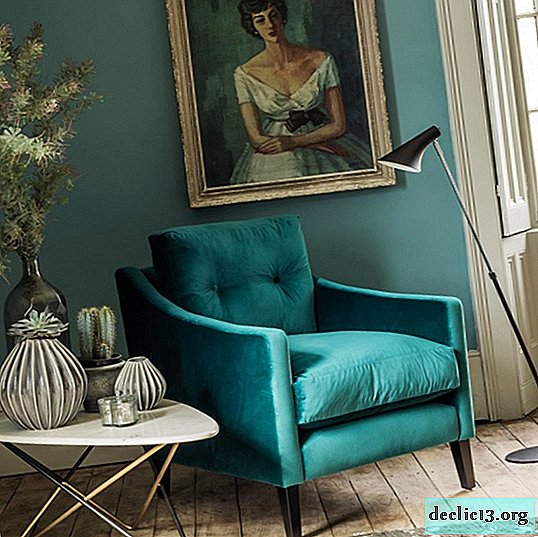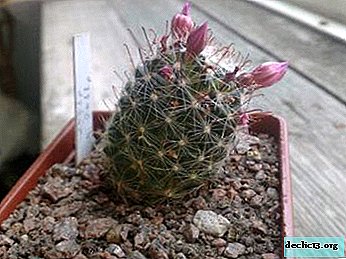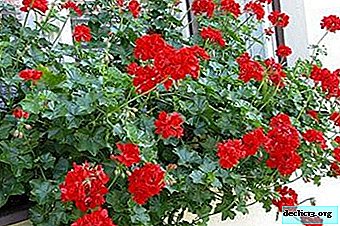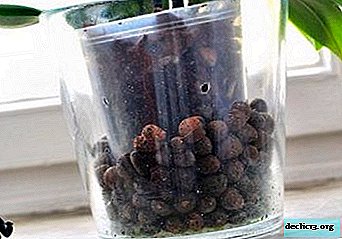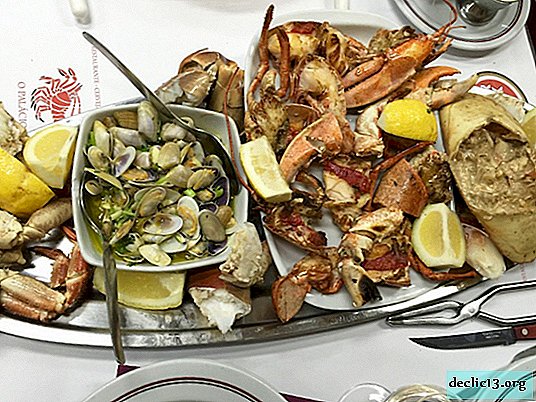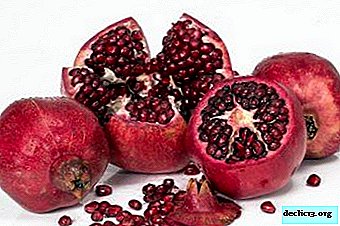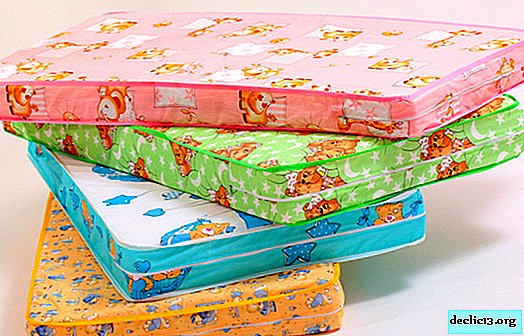Effective methods of propagation of triangular milkweed
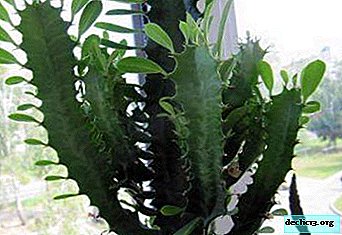
Euphorbia trihedral is a perennial, stem succulent, it belongs to the family Euphorbia. This plant is increasingly found in homes and greenhouses of amateur gardeners.
The plant has a magnificent decorative appearance and it is very easy to care for. Often the question arises of how to breed milkweed trihedral. What you need to know in order to easily grow your own young plants? More about this in our article.
Best time
The most favorable time for the breeding of Milkweed trihedral is spring and summer.Side cuttings of the plant need to start cooking in the spring. They are carefully cut and laid for several days in a dry place, and then immediately planted in intensely moistened soil. Also, after the cut, you can put the stalk in a container of water and wait for the first roots to appear, and then plant them in the soil.
Priming
The soil, for the normal growth and development of milk trihedral, must be breathable and well-drained. A special mixture will do.
 It is necessary to take all components in equal amounts:
It is necessary to take all components in equal amounts:
- turf land;
- sheet earth;
- sand;
- peat.
It is recommended to add brick chips to this soil mixture in the form of drainage. You can also use ready-made purchased soil for planting triangular milkweed. Any neutral succulent mix is suitable..
Pot
This plant grows very tall, but the pot for its comfortable growth should be relatively small. When planting, only the root part of the plant needs to be covered with soil, while there should not be much free space and free soil between the roots and the bottom of the pot, since when watering this will lead to stagnation of moisture and even death of the plant.
Pot for planting milkweed you need to take a medium size and take care of the stability of the pot, and, accordingly, the further stability of the milkweed itself.
At the bottom of the pot you can lay heavy stones, as well as good drainage. This will make it possible in the future not to tie up the succulent and not to create an external auxiliary support for it.How to propagate by cuttings?
This succulent grows from one trunk and only after a few years begins to branch, young shoots (cuttings) appear on its trunk. How to propagate a plant by cuttings? The Cherenkov method has its positive and negative points.
pros:
- minimum costs;
- high efficiency of the method;
- minimal risk of infection of the plant with diseases, in particular phylloxera;
- subject to all the rules for grafting, the minimum number of seedlings dies.
Minuses:
- a long period of waiting for the emergence of young shoots;
- there is a degree of risk of not the appearance of young roots.
Selection and preparation
With a sharp knife you need to carefully cut young cuttings on an adult plant. They should look as strong and healthy as possible. The place of the cut is treated with charcoal. Euphorbia emits a poisonous white liquid, when working with cuttings you need to use gloves.
How to root?
 There are 2 ways to root the cuttings.
There are 2 ways to root the cuttings.
First method:
- put the cut shoots for 2-3 days in a dry, warm place;
- prepare a pot;
- pour drainage into the pot;
- prepare the soil and cover it with drainage;
- after the expiration of the shoots, plant them in the soil, which must first be moistened intensively;
- put a pot with a young plant in a warm place with diffused sunlight.
Second method:
- cut young shoots;
- put seedlings in a container of water;
- wait for the first roots to form on the cuttings;
- prepare a pot;
- pour stones and drainage into the pot;
- prepare the soil and fall asleep on top of the drainage;
- moisten the soil and plant young seedlings into it;
- put the plant on a south or east window.
Planting seeds
At home, euphorbia can be propagated by seeds. The method also has its pros and cons.
pros:
- seed availability;
- a completely new plant grows, which will independently go through all the development paths.
Minuses:
- poor germination of seed material;
- a long period of waiting for the appearance of the ground part of the plant, as well as its further development.
Purchase
Seeds for planting Euphorbia trihedral need to buy only from trusted sellers.After the purchase, the seeds are best planted fresh and not stored, since their germination in this case is very quickly lost. If it is not possible to plant the seeds immediately, then they must be put stored in a dry, dark place.
Appearance
Good seeds should be:
- intact, without damage;
- no mold;
- monophonic, without extra splashes of color;
- all seeds must be the same, without admixture of other seeds and other objects.
Sowing
 Planting seeds is carried out according to the following scheme:
Planting seeds is carried out according to the following scheme:
- sow seeds in light soil to a depth of 1.5-2 centimeters;
- cover the container with seeds with a film, periodically ventilate and water;
- when a stable ground part of a plant appears on the surface of the earth, it can be transplanted;
- prepare a pot;
- make a drain;
- prepare the soil and fall asleep on top of the drainage;
- moisten the soil and plant young seedlings in it.
Division of the bush at home
Euphorbia can be propagated by dividing the root of the bush.
Pros and cons of the method
This method has its negative and positive points.
pros:
- the plant grows faster than from seeds or rooted cuttings;
- plants from the root grow stronger and healthier.
Minuses:
- the possibility of infection with diseases of each new part of the plant, if an adult succulent was sick;
- a high degree of risk of not the appearance of new ground shoots, in this case, the root simply disappears in the soil.
Preparatory stage
To prepare the root seedling, you need to proceed in the following order:
- for division, choose a healthy adult plant;
- remove the whole plant from its native pot;
- remove the entire ground part;
- gently rinse the root part with filtered water;
- with a sharp knife to divide the roots of the bush into parts, each part should have a sprout or bud;
- Dry the slice with charcoal or wood ash.
Action algorithm
 For new root seedlings to take root and grow, you need:
For new root seedlings to take root and grow, you need:
- treat each separated root part of the plant with a special tool - Kornevin;
- prepare a pot with drainage and soil;
- moisten the soil;
- plant a root seedling;
- be sure to slightly crush the soil around the new plant.
Outdoor cultivation
Euphorbia in open ground is not recommended. In the warm season, trihedral euphorbia can be kept outdoors.To the content of succulent in the air does not harm him, you must adhere to the rules:
- the plant should be in relative shade;
- euphorbia should not be exposed to direct sunlight, but only diffused light;
- watering the plant, when kept outdoors, should be frequent and plentiful, but you also need to make sure that the soil gets wet evenly and there is no stagnation of moisture in the earthen coma;
- when the air temperature drops below 120C, the flower needs to be moved to the room.
About how to care for milkweed trihedral at home and in the open, read our material.
Conclusion
Three-sided euphorbia can be grown at home in three ways. Which of the reproduction options is easier and more effective can be shown only by individual practice.
The information provided will help even a beginner grower to create at home a whole collection of these decorative succulents.


